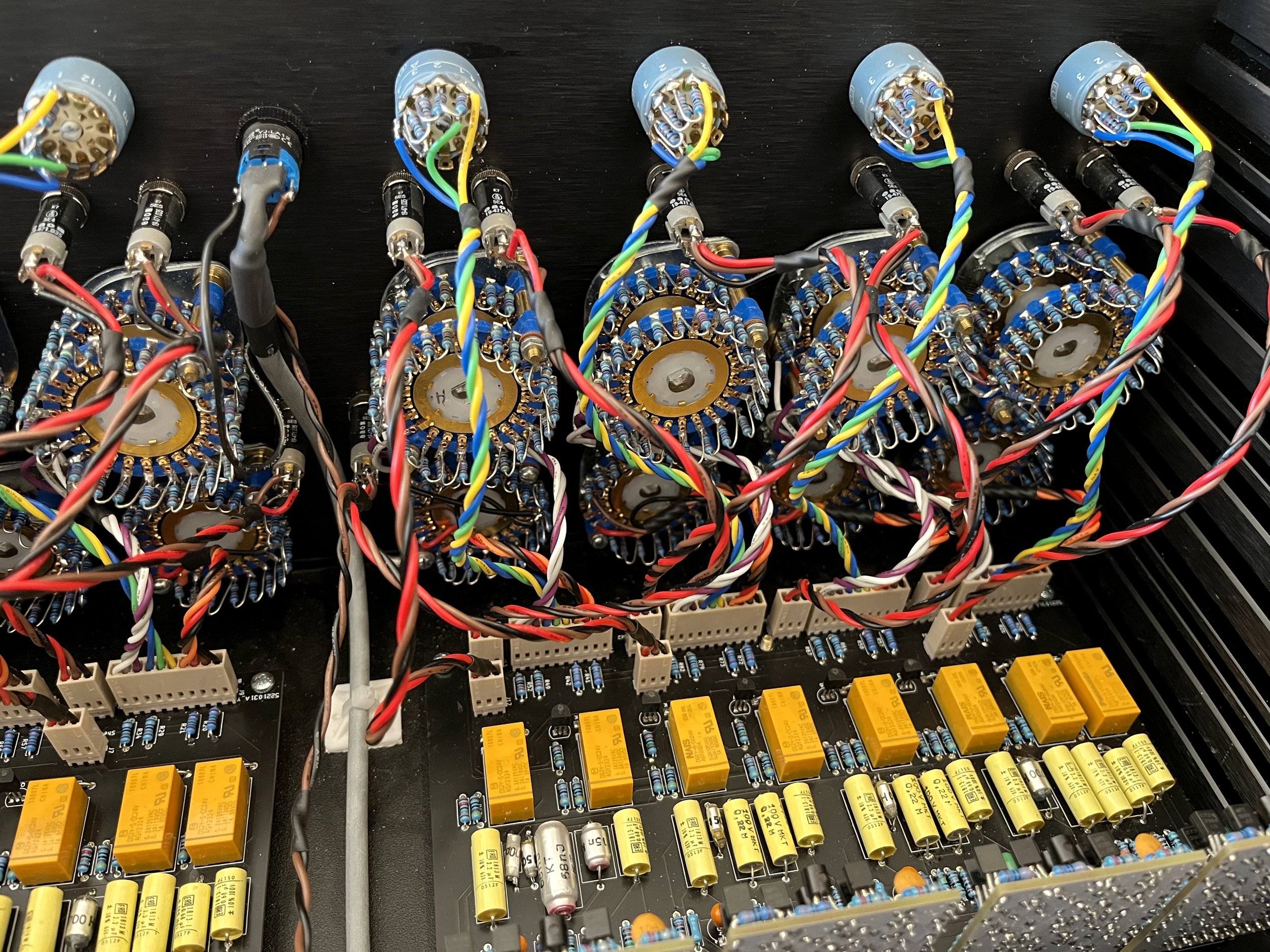Sontec MES-440G/7
I guess I don’t have to introduce the Sontec EQs to you, do I? Designed by George Massenburg and Burgess Macneal they are referred to as the pinnacle of parametric EQ design. Part of its beauty lies in the discrete opamps, that are highly sought after and although the design was introduced in the early 70s, they have only been reproduced a few years ago by Joe Malone.
After some experimenting with other opamps like the NE5534, OA10 and APP992 I decided to get an original HS2030 from Reverb and re-engineer it. Not because I was unhappy with the other options (especially the APP992 is highly recommended), but because I liked the challenge and wanted the unit to be as close to the original as possible. There were some challenges in re-engineering the HS2030, but in the end it worked out! One unique feature of the original HS2030 are their ultra-wide bandwidth. This was very important to George. I was able to achieve the same bandwidth as the original one I bought which means a flat frequency response up to 250kHz easily. The EQs frequency response is linear up to 150kHz (+/- 0.5dB). At first I designed a version that uses stronger output transistors for a lower output impedance and combined them for a better thermal compensation of idle current. Later I also designed a version that is as close as possible to the original one that I’m currently still testing. It’s a hot circuit!
During the months and years of experimenting with Spice simulations and hardware prototypes I also compared the Sontec schematics with the GML 8200. It was very interesting to see which changes George made to both the opamps and the Q section of the EQ after he left Sontec and started his own company. Especially the Q section performed so much better that I had to implement it in my version. The result is my EQ being a mixture of a Sontec and GML. The amp section and filters are still Sontec 432 style, but the Q section and some other details have been carried over from the GML. You can see in the pictures that the GML circuit keeps the maximum gain of 7dB regardless of the Q Setting, whereas the Sontec circuit loses around 1.5dB in narrow settings. Also, every filter band will introduce some overall level shift throughout the whole frequency range which gets worse the more you boost or attenuate. By means of the GML circuit the effect was halved. The amp section uses HS2030 opamps, but there are two GML 8202 opamps in each filter band, just like in the GML 9500 Model.
Unlike the MES-432 my version has four fully parametric band per channel where the high and low bands can be switched to shelf filters as in the MEP-250. The frequencies are the same as in the MES-432 and the gain is divided into 0.5dB steps up to 3dB and 1db steps above that which is perfect for Mastering. All the discrete opamps run at +/- 28V just like the originals whereas the DC servo ICs run at +/- 16V. Every band has its own relay based bypass. The gain and frequency switches come from Blore Edwards, the Q switches are Elma. Bypass and Shelf pushbutton switches are EAO. All frequency related capacitors are high grade German foil capacitors.
Fun fact: The model designation I chose is following the Sontec nomenclature. MES stands for Mastering EQ with Switches, 440 means 4U - 4 parametric bands - 0 shelf bands and 7 stands for +/- 7dB gain. G is just for „Gregors version“. :)
Features
HS2030 & GML 8202 style opamps
+/- 28V
frequency response up to 150kHz (+/- 0.5dB)
Elma & Blore Edwards rotary switches
EAO illuminated pushbutton switches
high grade foil capacitors
individual band bypass






